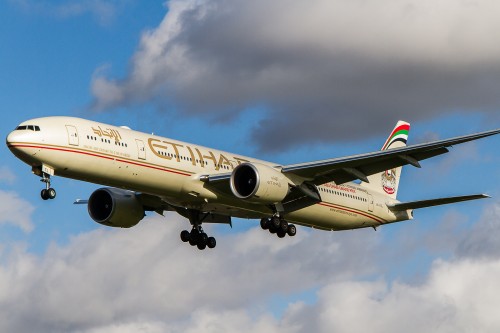
Having experienced both first and economy class on Etihad, it was now time to try business Photo: Jacob Pfleger | AirlineReporter
ETIHAD AIRWAYS PEARL BUSINESS CLASS REVIEW BASICS:
Airline: Etihad Airways
Aircraft: Airbus A330-200
Departed: Abu Dhabi (AUH)
Arrived: Amsterdam (AMS)
Stops: Non-stop flight
Class: Business class
Seat: 7A
Length: About 7.5 hours
Cheers: New business cabin layout, very private feel, direct aisle access for each seat, in-flight internet access (for a fee)
Jeers: Slightly narrow seat width for my liking
Overall: Etihad continues to be one of the market leaders in their premium cabin product
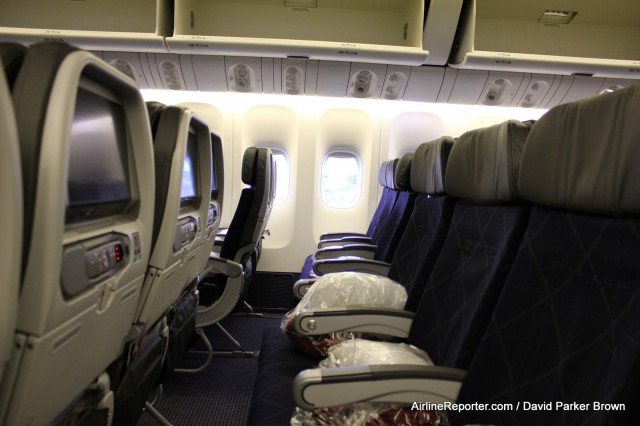
There is not a lot of room in economy to begin with, and reclining makes it worse
I am a non-recliner and I am not afraid to admit it.
What does that mean? It means that when I am flying economy (and sometimes in domestic first or a similar product), I just do not recline my seat – by choice.
I get that we are all given the “right” to recline our seats (otherwise, they wouldn’t put the button there, right?), but part of me just feels it is rude – so I don’t do it. I feel guilty every time I try to recline and wonder what I am doing to the passenger behind me. Am I smashing their laptop? Am I going to knock over a drink? Or am I going to make them roll their eyes and sigh?
Am I crazy here, or are there other non-recliners out there?
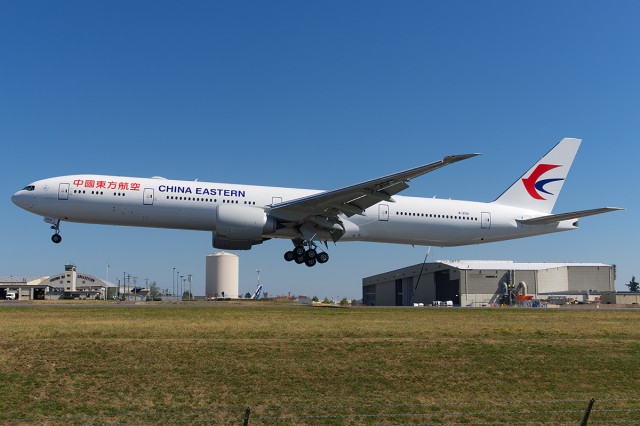
Brand spanking new 777-300ER at Paine Field showing China Eastern’s new livery – Photo: Bernie Leighton | AirlineReporter
Behold. This is probably the worst airline livery that I have ever seen.
China Eastern didn’t have the best livery to begin with. But at least it was a livery. Their new colors, shown off on this 777-300ER, look more like a leased plane where they don’t want to spend the money to paint the plane than an actual livery.
But what you are looking at here is China Eastern’s official new livery. It will be going fleet-wide (unless they come to their senses). This is the first of 20 new 777s that the airline plans to take delivery of.
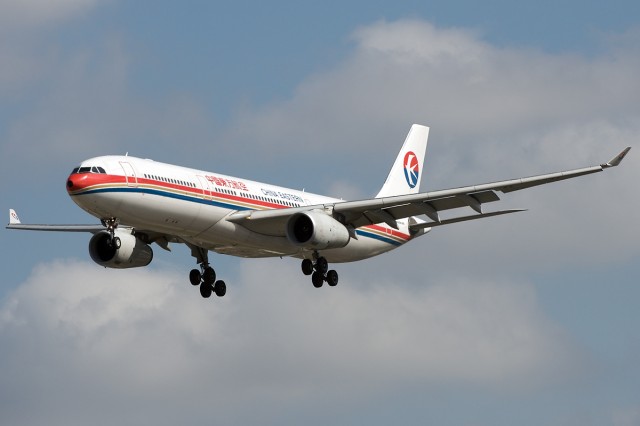
China Eastern Airbus A330 in current livery – Photo: Bernie Leighton | AirlineReporter
I am not quite sure how a company can conclude that this is a good idea. Let’s not bother with a creative design down the side or even care about having more than three colors. Let’s just workshop some horrid livery in Microsoft Word and call it a day.
I really, really hope that the airline re-considers this design. Please.
What do you think of this livery?
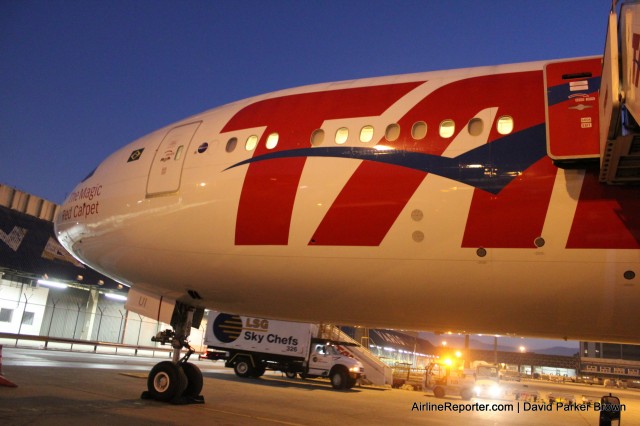
Getting off the TAM 777-300ER in Sao Paulo
TAM AIRLINES BUSINESS REVIEW BASICS:
Airline: TAM Airlines
Aircraft: Boeing 777-300ER (reg PT-MUI)
Departed: John F Kennedy Airport (JFK)
Arrived: São Paulo’“Guarulhos International Airport (GRU)
Stops: None
Class: Business Class
Seat: 10A, no 10C, no 10H, no really 10C, heck why not 11G?
Length: About 8.5hrs
Cheers: The good customer service really made this flight stand out
Jeers: The product is old, but is in process of being replaced
Bottom Line: I hit some bumps, but still felt this was a good flight experience
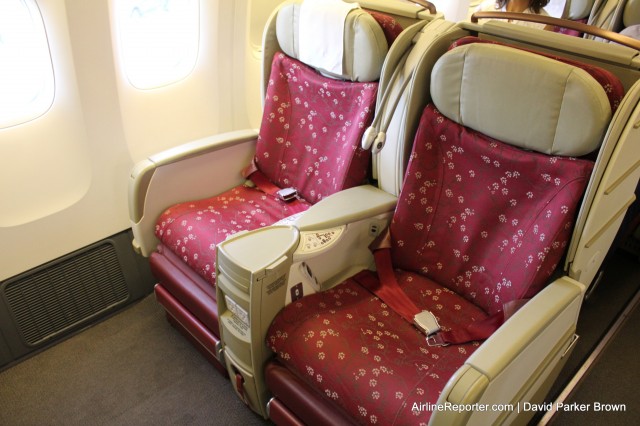
The Business Class product currently on TAM’s 777-300ERs
FULL TAM AIRLINES’ BUSINESS CLASS REVIEW:
I was recently invited by TAM Airlines to travel down to Sao Paulo to check out their operations. Of course, with any trip, one of the best parts is the flight – especially when it involves business class.
Previously, I had the chance to check out the interior of a new TAM Boeing 777-300ER, but I was excited to put the product and service to the test. My flight originated in New York at JFK and I ended up with a two-hour layover in JFK (was supposed to be four, but had a flight delay out of Seattle). I was a little bit nervous since I didn’t yet have a boarding pass for my TAM flight.
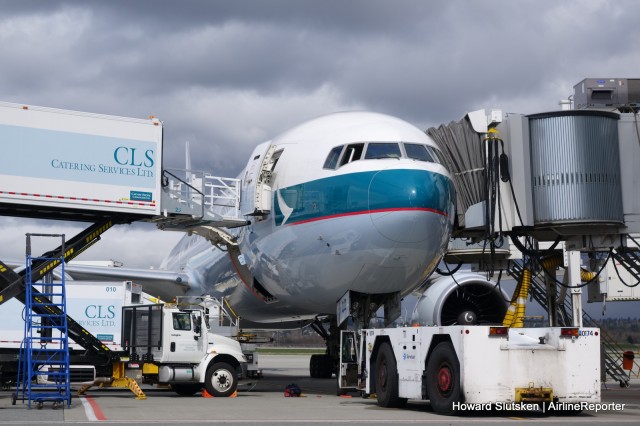
A Cathay Pacific Boeing 777-300ER in the midst of a turnaround at YVR
On the heels of Cathay Pacific retiring the Queen of the Skies from the North American services, they have announced a service expansion to add another US city. As of May 1, 2015, Cathay Pacific will begin service to its sixth destination in the United States with the addition of Boston.
The Boston service also comes fairly quick on the heels of Cathay launching their service to Newark earlier this year and adds another connection to the Northeast. With multiple daily services to New York’s JFK Airport, a daily flight to Newark, and now a four times per week service to Boston, things are picking up for the east coasters.
Why Boston though? Like Newark, it doesn’t seem the most likely of destinations. According to Cathay Pacific, among its connecting passengers to Hong Kong, Boston is the largest market with over 53,000 passengers flying between Boston’s Logan Airport and Hong Kong. All 53,000 of them having to connect somewhere along the way. That sounds like a fairly decent reason to add a daily service to me!






